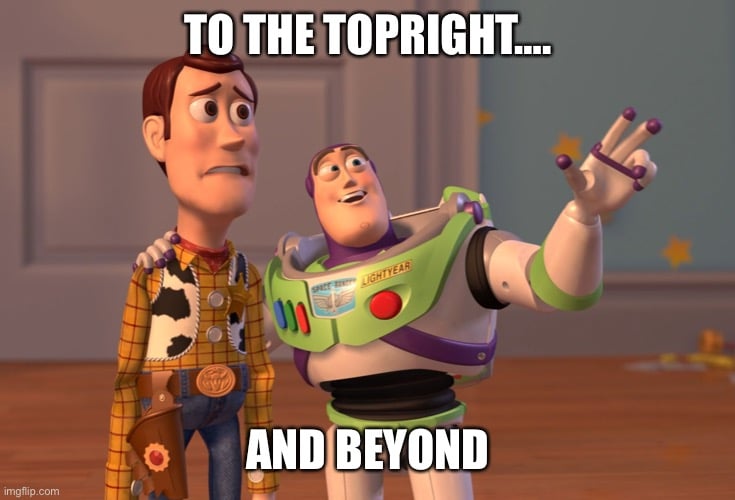We’re sure you don’t meme to infringe copyright in your marketing (see what we did there?!), but it can happen. This article explores ways to assure your use of memes stays legal…
Jumping on trending content with memes like ‘NFTs’, the ‘distracted boyfriend’ and ‘not a wordle’ might seem like a good idea. But, as with anything creative, copyright violations can arise. Copyright allows owners to prevent their work being exploited by others, and so disputes over NFTs, memes and other creative work may arise.
We’ve all been there – you come up with a great idea, edit the graphic and send it to your manager for sign off. Then, sometimes after you’ve posted, someone on your team, or in your audience, mentions copyright. Cue the quick panic.
But, have no fear! There are steps you can take to ensure the use of memes in your marketing content is legal but still fun. Read on for a few tips on how to navigate the evolving world of memes…

1. Get the rights or permission to use the image
To get the rights or permission to use an image, you first need to locate the owner. You can then negotiate whether payment is required for your intended use. This is the safest way to ensure you are allowed to use the image.
2. Use reputable sources for images
There are licensed sources with libraries of images that might be suitable for the work you want to create. You will be required to purchase a license fee, and ensure this license covers your plans for the image. This will help to protect you and the content you are sharing.

3. Comply with specific terms
If an image states that there are specific terms relating to the distribution of the image, ensure you are following these to the tee.
4. Use Google
Google has some handy features which allow you to filter your search results to only show Creative Commons and public domain work. This means that usually the work will be free to use or share. However, it’s still worth checking the rights. You can never be too careful!
5. Check the copyright agreement
One of the most obvious ways to ensure you are adhering to copyright rules is by checking the copyright agreement. Some images will display the copyright icon in the corner of an image, and this helps to inform you what you are able to do with this image. That being said, not all copyrighted images will display the copyright icon and, sometimes an image will state that it is “royalty-free” or “copyright-free”. That still doesn’t mean that it can be distributed or copied without authorization. Minefield.
6. Educate your team
Depending on your industry, not everyone in your team will be aware of copyright law and its implications. Therefore, education is key to avoiding any nasty surprises. You could develop an internal FAQs document and policy, which gives simple and clear guidance if someone is unsure.
7. Give credit to the copyright holder
Ensure that, when using an image, you give full credit to the person who created it. Stock image sites such as iStock, Pexels and Unsplash clearly state the owner of an image and how they need to be credited. So, if you follow these steps, it will help to keep the copyright holder happy.

8. Avoid financial gain from copyrighted work at all costs
If you need to go down the route of claiming fair use of a piece of work, it’s much easier when the material has been used for non-commercial purposes.
9. Check your contracts
Ensure that any contracts with agencies or freelancers assign copyright to assets they are creating for you. This helps to protect your work too.
10. Create your own
Better yet, create your own graphics and memes and you won’t need to worry! You could buy stock photos from reputable sources with the acceptable copyright (see below) descriptions and create your own content over the top.
11. Remove unauthorized content
If you have been reading this article and alarm bells have started ringing, it’s a good idea to review any risky content now. You might not have been approached yet, but it could happen in the future.
We would recommend taking down and swapping out this content immediately. Just because you don’t know who the owner of the image is, it doesn’t mean that the image isn’t copyrighted.
Conclusion
What you see on the internet isn’t fair game, so what are your next steps? As mentioned above, there are many ways to use memes legally, but the best idea is to create your own. Copyright rights can be a minefield and, whether you have benefitted financially from an image or not, you can still be liable. So, if you have the time and resources, it’s best to come up with your own ideas. These will help your marketing content to stand out from the crowd anyway!
Do you have any tips for using memes in your content? Or do you have ideas for creating new meme content? Let us know!
To learn more about how to create effective content marketing, sign up for the TopRight blog! If you’d like to receive more great marketing tips like this, please follow me @TopRightPartner, connect with me on LinkedIn, or buy a copy of my latest book, Marketing, Interrupted.
Please be advised that this article is for general informational purposes only and should not be used as a substitute for advice from a trained legal professional. Be sure to consult a legal professional if you’re seeking advice about copyright. We are not liable for risks or issues associated with using or acting upon the information on this site.
Meme produced using ImgFlip.
Photos by Pixabay on Pexels and Canva Studio on Pexels.


